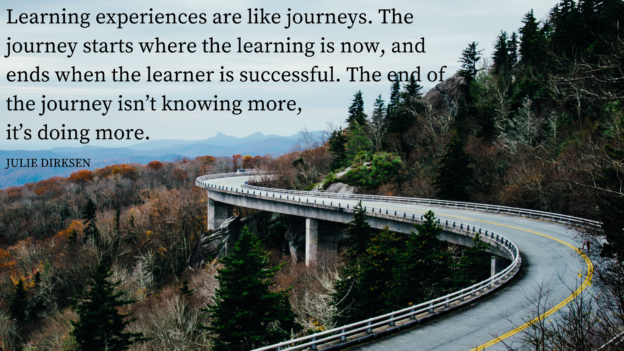Once upon a time, to teach meant that you stood or sat in a classroom in front of people and engaged in activities designed to help those people learn something. You might have lectured or presented concepts, theories, or formulas. You might have demonstrated how to perform an activity or experiment. You might have engaged the people in the classroom in a discussion about a topic or a reading. When the time for the class was up, you left the room and interacted with the people only if they had questions or needs, and they most likely came to you during specific times when you were available for consultation.
The content for these classes was in a notebook or file folder, prepared and maintained by you, the instructor. If you shared anything, it was in the form of paper handouts. Sometimes you prepared manuals for distribution to the participants in your classes. In some cases, you may have added audio cassettes or CDs for participants to use when reviewing the lessons. Each person had their own set of materials for their own use.
Times have changed, haven’t they? We are less likely to be in a classroom these days, and the materials we provide may be documents, videos, or audio files stored on a website that participants in training access on their own, according to their needs. The ability to provide new materials and make changes to previous versions has also made updating course content faster (and easier, in my opinion). We are connected to students in a variety of ways: Email, text message, social media, and learning management systems, to name a few.
I believe that the nature of teaching and learning has also changed. We still conduct formal training sessions to present material and give students the opportunity to ask questions and practice; however, there are also informal, social learning opportunities as well. The content we prepare for formal learning can be repurposed and used for informal learning as well.
I have been creating short “Quick Tip” videos for some time. Each one explains to real estate agents how to do something for their business and in some cases, why it’s important. The content for these videos comes from the material I regularly train on in my classroom sessions. Because these are short “Quick Tips,” I use discrete lessons that can be presented in two to four minutes in a video. I typically use no visual aids, and it’s just me in the frame of the video.
These videos are distributed to my social channels (YouTube, Facebook, and LinkedIn). They also sit on a page on my website. I invite viewers to comment and subscribe, but most people will see the video through social channels as they view their newsfeeds. Recently I took one of the “tracks” we teach as part of the Floyd Wickman Program, the “Referral Lead Generator,” and created a short “how to” video:
I can use this video as a short reminder lesson for students in the program, to promote my business as a Floyd Wickman trainer, and to simply connect with past students who may have forgotten the technique and want to review it for their use. Eventually this video will be linked to my email signature where I invite people to view my latest “Quick Tip.” It gives a broad audience a taste of what I train on and how I present the content.
When I create videos, I order captions and a transcript from an online service. The transcript of the video can be stand-alone content for a blog post or website page. Many podcasts double as audio and video files, distributed to different channels for different purposes. Webinars can be recorded and offered for on-demand learning on a learning management platform or other website. Repurposing content is taking what you have already prepared and using it in a different way.
People learn in different places, at different times, and by different means than they did 20 or 30 years ago. By repurposing your training content and making it available via different channels, you are more likely to reach more students (and potential students) than you might by confining your teaching to the classroom.

